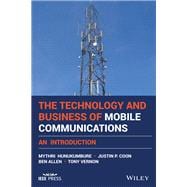An intuitive and insightful overview of the technical and business aspects of the telecoms industry
In The Technology and Business of Mobile Telecommunications: An Introduction, a team of expert telecommunications researchers and consultants delivers a rigorous exploration of the technical and business aspects of mobile telecommunications. The book offers a complete overview of an industry that has seen rapid technical and economic changes while retaining the ability to provide end users with communications coverage and capacity.
The authors demonstrate the technical foundations of the mobile industry and show how a communications network is deployed. They detail many of the main innovations introduced over the last few years and some of the most salient challenges facing the industry today. The business models of major mobile operators are examined as well, from the purchasing spectrum to network deployment and customer attraction and retention.
The role of the regulator is also thoroughly discussed, with explorations of its role in encouraging the maintenance of a competitive market in which the needs of consumers are met.
Readers will also enjoy:
- Thorough introductions to the social and economic impacts of mobile communications, as well as a brief history of mobile and cellular communications
- Comprehensive explorations of the mobile telecoms ecosystem, from spectrum regulation to standardization, research, end users, operators, vendors, and standard bodies
- Practical discussions of the business models and challenges of mobile operators, including mobile virtual network operators and the implementation of international roaming
- In-depth examinations of telecommunications standards, including 5G
Perfect for anyone studying mobile telecommunications technology at the undergraduate and graduate levels, The Technology and Business of Mobile Telecommunications: An Introduction is also an indispensable resource for practitioners within the telecommunications industry in a technical or business-oriented role.








